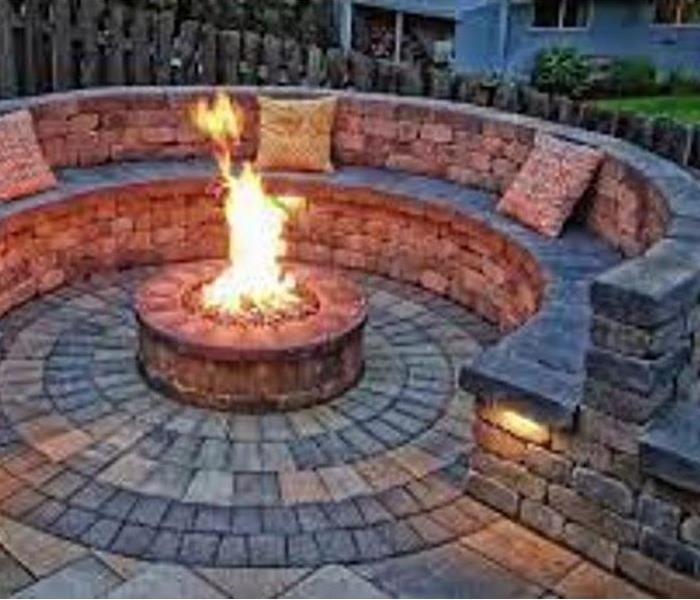Fire Pit Safety
2/2/2022 (Permalink)
Are outdoor fire pits safe? They absolutely can be with these safety tips.
For owners and soon-to-be owners of these crowd-pleasing centers of warmth, here are some important tips that will keep you, your children and pets, and friends safe.
1. Fire Pit Clearance
How far does a fire pit have to be away from the house?
Before striking the match, never place a pit closer than 10 feet from anything flammable, including your house and overhead tree branches.
Unless the owner’s manual says it’s okay, don’t put the pit on a grassy surface, wood deck, or enclosed porch.2. Fire Pit Fuel
Always burn dry, seasoned wood that was cut at least six months earlier. To keep sparks from flying, make sure logs are no longer than three-quarters of the pit’s diameter.
With gas pits, make sure all vents are clear to avoid smoky flare-ups. And only use the fuel that the pit is built to burn. For traditional wood-burning pits, that means using dry, well-seasoned sticks. Also, don’t load in so many that there’s a danger of some falling out. Once the pit is lit, keep the following close at hand, just in case your merry bonfire suddenly starts burning a little too bright.
3. Starting the Flames
Never use lighter fluid, gas, or kerosene to light a fire.
4. Putting Out a Fire Safely
Water or Sand
Extinguishing a flare-up might be as simple as keeping your garden hose nearby, with the water turned on and the nozzle set to "spray." (A focused stream of water could spread burning embers.)
Check ahead of time to see if your pit can withstand a dousing; water can crack ceramic pits and even some metal ones. If it can't get wet, or if you're not sure, keep a bucket of dry sand nearby to dump on the flames. For a gas or propane pit, turn off the supply before attempting to extinguish any fire.
Fire Extinguisher
It should be a dry-chemical extinguisher with a Class B and C or multipurpose rating, such as the one you have in your kitchen. Be ready to follow the PASS procedure: 1) Pull the pin; 2) Aim at the base of the fire; 3) Squeeze the trigger slowly; 4) Sweep the nozzle from side to side. Remember that most portable fire extinguishers have a range of just 6 to 10 feet and last for 8 to 10 seconds.





 24/7 Emergency Service
24/7 Emergency Service
